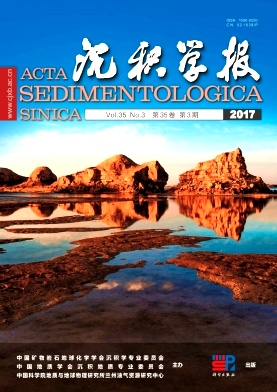Stable Carbon Isotope of Middle Jurassic Plant Fossils in the North Edge of Turpan-Hami Basin, Xinjiang and Their Palaeoenvironmental Implications
doi: 10.14027/j.cnki.cjxb.2017.03.007
- Received Date: 2016-11-15
- Rev Recd Date: 2016-12-30
- Publish Date: 2017-06-10
-
Key words:
- Turpan-Hami Basin /
- Middle Jurassic /
- fossil plants /
- stable carbon isotope /
- Ci/Ca /
- palaeoenvironment
Abstract: The plant fossil assemblage from the Jurassic Xishanyao Formation in the north edge of Turpan-Hami Basin, China, is ascribed into Coniopteris-Phoenicopsis flora. The four dominant genera of fossil plants which are Ginkgoites, Phoenicopsis, Cladophlebis, Stenorachis, are chosen to perform stable carbon isotopic analysis. The δ13C values of three fossil leaves of Ginkgoites, Phoenicopsis, Cladophlebis range from -21.66‰ to -23.83‰, which indicates they blong to C3 type. The Stenorachis is one fossil of reproductive organs. Its δ13C value is -20.91‰, more enriched than those of fossil leaves, showing the reliability of carbon isotopic data. According to formula, the δ13C of plants is converted into stable carbon isotopic values of atmospheric CO2 (δ13Ca). It is found that modern and Middle Jurassic δ13Ca values obtained from Ginkgoales leaves are similar to those obtained from other methods, suggesting Ginkgoales leaves are reliable specimens for reconstructing δ13Ca during geological period, which provides a simple and feasible method to obtain δ13Ca from the Mesozoic to Cenozoic. Ci/Ca is an important plant ecophysiological parameter. Thus, δ13C of Ginkgoales leaves is also converted into Ci/Ca. The Ci/Ca value of fossil Ginkgoites is 0.6, similar to 0.63 that is Ci/Ca value of living Ginkgo. It was known that palaeo-CO2 level in the Middle Jurassic is about 4.5 times of nowaday CO2. However, Ci/Ca keeps approximate constant between living and fossil Ginkgoales leaves. It indicates that Ginkgoales plants possess high photosynthetic rate in the Middle Jurassic, as well as favorable sensitivity of stomata to CO2 change. Thereby, stomata of Ginkgoales plants are good indicator of reconstructing palaeo-CO2 level. As a result, variation in Ci/Ca provides effective means to estimate whether one plant can be used as indicator to reconstruct palaeo-CO2 level.
| Citation: | XIAO Liang, QI YaLing, MA WenZhong, LI XiangChuan, GUO JunFeng, SUN Nan, YAO XiaoYong. Stable Carbon Isotope of Middle Jurassic Plant Fossils in the North Edge of Turpan-Hami Basin, Xinjiang and Their Palaeoenvironmental Implications[J]. Acta Sedimentologica Sinica, 2017, 35(3): 489-498. doi: 10.14027/j.cnki.cjxb.2017.03.007 |






 DownLoad:
DownLoad: